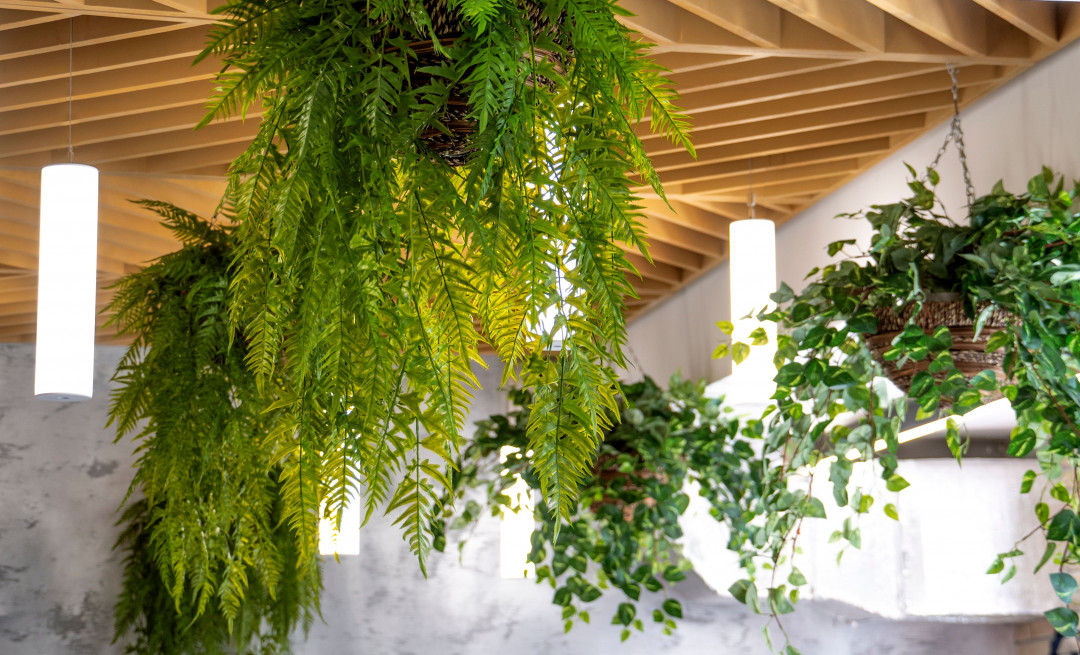Everything You Need to Know About Biophilic Design




As architects and design professionals, you know that incorporating nature into your designs can help create environments that support productivity, mental clarity, and health. That is where biophilic design comes in – a comprehensive approach to designing with nature at the core. Biophilic design goes beyond just adding some plants to interiors or using natural elements for décor; it’s about creating a deep connection between humans and nature inherent to our evolutionary heritage. We’ll break down what biophilic design looks like, in practice, the various strategies used by designers to implement it successfully, and how understanding the biophilic design principles can be beneficial when planning spaces.
What is Biophilic Design and How Does it Benefit Us?
Biophilic design has taken the business world by storm and is gaining more popularity with each passing day. The concept focuses on bringing nature indoors through biophilic design principles that enhance our connection with nature. Biophilic building design often includes features such as natural lighting, greenery, and water elements. Incorporating biophilic design principles has several benefits, including reduced stress, increased productivity, and improved well-being. In today's fast-paced business world, where work-life balance is often overlooked, biophilic design offers a way to reconnect with nature and promote a healthier, more serene work environment. As businesses strive to improve the physical and mental well-being of their employees, biophilic design has become a practical and effective solution.
What are some of the Benefits of Biophilic Design in the Workplace?
In today's fast-paced business world, companies are always looking for innovative ways to boost employee creativity and productivity. One approach that has gained traction in recent years is biophilic design in the workplace. This architectural style incorporates elements of nature into the office design, such as living plants, natural light, and calming colour schemes. The benefits of biophilic design are numerous, including increased creativity, improved productivity, higher employee engagement, and overall better well-being. Studies have shown that employees working in biophilic environments show lower stress levels and are more motivated to come to work. This makes biophilic design a worthwhile investment for any company looking to create a more positive and productive workplace culture.

Any budget-friendly tips to help incorporate Biophilic Design into a space?
Incorporating biophilic design elements into your workspace can have a significant impact on productivity, well-being, and job satisfaction. But how can you achieve this without breaking the bank? The good news is that there are plenty of budget-friendly strategies you can implement. Start by bringing in natural elements such as plants, rocks, or water features. Additionally, consider incorporating earthy colour palettes and materials like wood, brick, or stone to create a more natural atmosphere. You can also optimize natural light and fresh air by opening windows and utilizing skylights. Studying biophilic design architecture examples can inspire you to find creative and affordable ways to bring nature into your workspace, and the benefits will be well worth it.
Are there any examples of Biophilic Design Projects around the world?
From Singapore's Gardens by the Bay to Brazil's Burle Marx Park, the world boasts numerous examples of biophilic design architecture that incorporates nature into building structures. Biophilic building design has been found to have a positive impact on human health, productivity, and overall well-being. With an emphasis on connecting people with the natural world, biophilic design projects around the world have transformed urban spaces into sanctuaries of greenery, water features, and sustainable materials. These designs serve as a testament to the power of reconnecting with nature in our built environments.
What impact does Biophilic Design have on our Mental Health?
As we continue to spend more time indoors, biophilic design principles are increasingly being incorporated into building designs. Biophilic design involves bringing nature into our spaces, and it has been shown to have numerous benefits, including improving mental health. Exposure to natural elements like plants or water features has been linked to reduced stress, anxiety and depression levels, improved productivity, and increased creativity. The biophilic design doesn't have to be limited to just plants, however. Other elements such as natural materials, lighting, and colours can be incorporated to create a more calming and restorative environment. Overall, designing spaces that incorporate biophilic elements can have a significant positive impact on our mental well-being.
How can architects collaborate with designers to incorporate Biophilic Design into their projects?
Incorporating Biophilic Design into architectural projects has become a trending topic in the business. Architects, landscape designers and interior designers have been focusing on creating designs that promote a connection between humans and nature while still being aesthetically pleasing. Collaborative efforts are being made to enhance the space by incorporating different natural elements such as wood, stone, water, and greenery, which in turn result in creating a calming and soothing environment for the occupants. The amalgamation of Biophilic Design with architecture, when executed correctly, can create beautiful and inspiring spaces, leaving the occupants with a sense of comfort and well-being.

In conclusion, biophilic design is a powerful and unique approach to improving the quality of our lives. It acts as an enabler of well-being, revitalizing indoor spaces with natural elements and colours that evoke feelings of rejuvenation. There are numerous ways to incorporate biophilic design into commercial buildings, such as bringing in greenery and natural light, creating courtyards for outdoor spaces, balancing the temperature with nature’s own airflow systems, or utilizing soundscaping to evoke certain emotions. Architects have the amazing opportunity to collaborate with landscape designers and interior designers to bring biophilic design concepts into their projects, providing a truly special experience that benefits both clients as well as employees. Ultimately it’s time to start taking advantage of this amazing way of introducing nature back into our everyday lives and enjoying its benefits for improved physical health and mental well-being. What do you think of Biophilic Design? Let us know!




 Indonesia
Indonesia
 New Zealand
New Zealand
 Philippines
Philippines
 Hongkong
Hongkong
 Singapore
Singapore
 Malaysia
Malaysia







